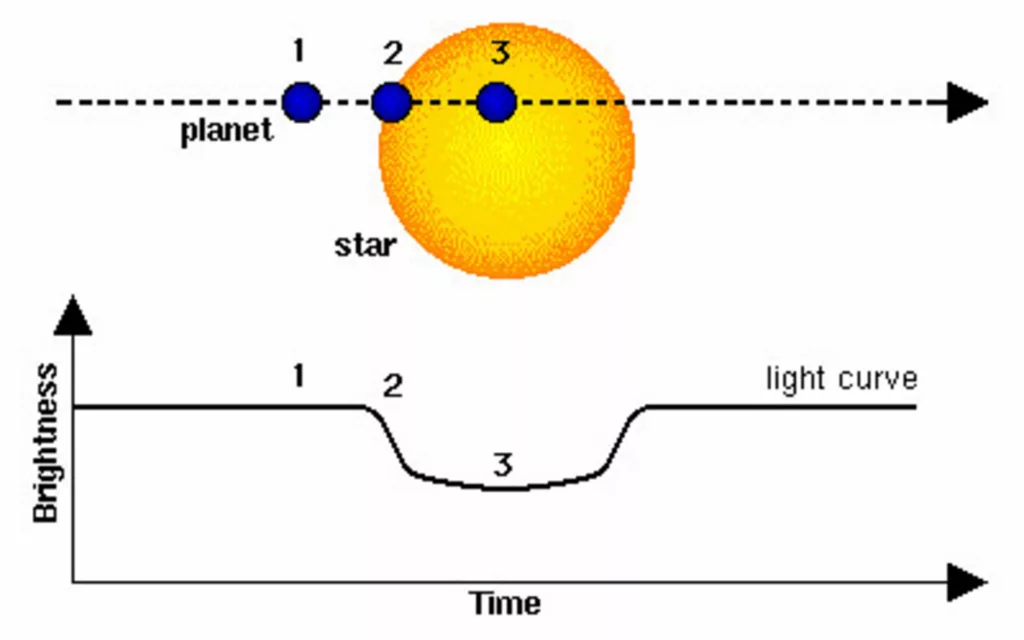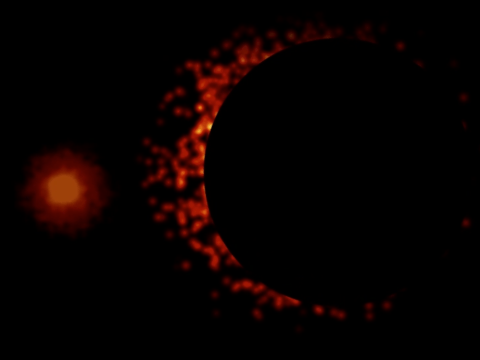Discovering Exoplanets
In the vast expanse of the cosmos, beyond the familiar confines of our solar system, lie worlds that challenge our understanding and ignite our curiosity—exoplanets. These celestial bodies, orbiting stars other than our Sun, have become a cornerstone in modern astronomical research, offering tantalizing glimpses into the potential for life and diverse planetary systems in the universe.
Exoplanets, once the stuff of science fiction, have now been catapulted to the forefront of scientific exploration, thanks largely to the power and precision of telescopes. These instruments, both ground-based and space-borne, serve as our eyes into the distant reaches of space. Through their lenses, we’ve not only confirmed the existence of these distant worlds but have also begun to unravel their mysteries—analyzing their atmospheres, determining their compositions, and even speculating about their potential to harbor life.
The journey of discovering exoplanets is a testament to human ingenuity and the relentless quest for knowledge. As we stand on the cusp of further discoveries, it’s evident that telescopes are not just tools but gateways, opening doors to new worlds and redefining our place in the cosmic tapestry.
Historical Perspective
The quest to uncover worlds beyond our solar system has deep historical roots, long before the advent of the sophisticated telescopes we know today. Early astronomers, armed with curiosity and rudimentary tools, laid the groundwork for what would become one of the most exhilarating pursuits in the annals of science.
In the initial stages, the concept of exoplanets was largely speculative. Without the means to directly observe or detect these distant worlds, astronomers relied on theoretical models and indirect observations. They sought anomalies in stellar movements or unexplained phenomena that might hint at the gravitational influence of an unseen planet.
However, the landscape of exoplanet research underwent a seismic shift with the evolution of telescopic technology. As telescopes became more refined, so did our ability to peer deeper into space with greater clarity. The introduction of space-based telescopes, free from the distortive effects of Earth’s atmosphere, marked a significant milestone. Instruments like the Kepler Space Telescope, with its precision and wide field of view, ushered in a golden era of exoplanet discovery.
This telescopic revolution not only expanded our inventory of known exoplanets but also enriched our understanding of their diverse characteristics. From gas giants larger than Jupiter to rocky worlds potentially harboring liquid water, the array of exoplanets unveiled has been nothing short of astounding.
Reflecting on this journey, it’s evident that while our innate curiosity sparked the quest for exoplanets, it’s the relentless advancement in telescopic technology that has propelled us to the forefront of cosmic discovery.
Modern Telescopic Methods for Exoplanet Detection
The discovery of exoplanets has been bolstered by innovative telescopic techniques, each offering a unique window into the distant realms of our galaxy. As technology has advanced, so too have our methods, allowing us to detect and study these elusive worlds with unprecedented precision.

Transit Method
One of the most prolific techniques in exoplanet detection, the transit method capitalizes on the periodic dimming of a star as an orbiting planet passes in front of it. This celestial eclipse, though subtle, is detectable by sensitive telescopes. By monitoring these repetitive light dips and their intervals, astronomers can infer the planet’s size, orbital period, and even potential atmospheric properties.
Radial Velocity or Doppler Method
While the transit method observes the effects of a planet on a star’s light, the radial velocity method focuses on the star’s motion. As planets orbit stars, they exert a gravitational tug, causing the star to wobble slightly. This motion induces a Doppler shift in the star’s light spectrum, which telescopes can detect. By analyzing these shifts, astronomers can deduce the presence of a planet, its mass, and its distance from the star.

Direct Imaging
Arguably the most challenging method, direct imaging seeks to capture actual pictures of exoplanets. Given the brightness of stars and the comparative faintness of planets, this is no easy feat. However, with advanced telescopes equipped with coronagraphs or starshades to block out stellar light, some exoplanets have been directly imaged, offering tantalizing visuals of these distant worlds.
In the realm of exoplanet research, telescopes are our eyes, and these modern methods are the lenses through which we view and understand the vast array of planets that dot our galactic landscape. Each technique, with its strengths and challenges, contributes to the rich tapestry of knowledge we are weaving about the universe and our place within it.
Notable Telescopes and Their Discoveries
The realm of exoplanet research has been illuminated by the watchful eyes of some of the most advanced telescopes ever constructed. These instruments, both in space and on Earth, have expanded our cosmic horizons, unveiling a universe teeming with distant worlds.
Kepler Space Telescope: Launched in 2009, Kepler’s primary mission was to seek out Earth-sized planets orbiting within the habitable zones of their host stars. Using the transit method, Kepler observed over 150,000 stars, leading to the confirmation of more than 2,300 exoplanets. Its discoveries have provided invaluable insights into planet formation, diversity, and the potential for life elsewhere in the galaxy.
Hubble Space Telescope: While not primarily designed for exoplanet research, Hubble has made significant contributions to the field. Its high-resolution imaging and spectroscopy capabilities have allowed astronomers to study exoplanet atmospheres, detect water vapor, and even observe weather patterns on distant worlds.
TESS (Transiting Exoplanet Survey Satellite): Succeeding Kepler, TESS was launched in 2018 with the goal of discovering exoplanets around the brightest stars in the sky. In just a short span, TESS has identified numerous exoplanet candidates, many of which are prime targets for further study by future telescopes.
James Webb Space Telescope (JWST): Slated for launch, the JWST promises to revolutionize exoplanet research. With its unprecedented infrared capabilities, JWST will be able to peer through dusty disks where planets form, study exoplanet atmospheres in detail, and potentially detect signs of life on other worlds.
These telescopes, each groundbreaking in its own right, have collectively paved the way for our understanding of exoplanets. As we look to the future, the next generation of telescopes promises to delve even deeper into the mysteries of the cosmos, bringing us closer to answering the age-old question: Are we alone in the universe?
Key elements involved in the discovery and study of exoplanets
| Aspect | Description | Importance or Impact |
|---|---|---|
| Detection Methods | Transit method, radial velocity, direct imaging, etc. | Each method has its strengths and limitations. |
| Notable Exoplanets Discovered | Kepler-22b, Proxima Centauri b, TRAPPIST-1 system, etc. | Showcase of diversity and significance. |
| Characteristics of Exoplanets | Size, orbit, composition, atmosphere. | Understanding different types of exoplanets. |
| Habitability Criteria | Distance from star, atmosphere, potential for water. | Criteria for potentially habitable exoplanets. |
| Technology Used in Discovery | Space telescopes like Kepler, TESS, ground-based observatories. | Technological advancements aiding discovery. |
| Challenges in Exoplanet Study | Distance, faintness, interference from host stars. | Challenges researchers face in observations. |
| Future Missions and Studies | James Webb Space Telescope, ESA’s PLATO mission, etc. | Upcoming missions to advance exoplanet research. |
Conclusion
As we gaze into the vastness of the cosmos, it’s telescopes that serve as our guiding lights, unveiling the mysteries of distant worlds and the intricacies of our universe. These instruments, from their humble beginnings to the technological marvels of today, have been instrumental in reshaping our understanding of the galactic tapestry.
The discovery of exoplanets, once a mere figment of imagination, has now become a cornerstone of astronomical research. Each new world we uncover adds a piece to the puzzle, challenging our perceptions and fueling our curiosity. And at the heart of this exploration lies the relentless power and precision of telescopes.
Looking ahead, the horizon of exoplanet research is radiant with promise. As telescopic technology continues to advance, so too will our insights into these alien worlds. From probing their atmospheres to searching for signs of life, the possibilities are boundless.
In this grand cosmic journey, telescopes stand as testaments to human ingenuity and our insatiable quest for knowledge. As we continue to push the boundaries of what’s known, it’s clear that the future of exoplanet research is not just about discovering new worlds, but also about understanding our place in the vast expanse of the universe.
FAQ Section for “Discovering Exoplanets”
What are Exoplanets?
Exoplanets are planets located outside of our solar system, orbiting stars other than the Sun.
How Do Scientists Discover Exoplanets?
The most common methods are the transit method, radial velocity method, and direct imaging.
What Makes an Exoplanet Potentially Habitable?
Factors include the right distance from its star, conditions favorable for liquid water, and a stable atmosphere.
Can We See Exoplanets Directly?
Direct imaging of exoplanets is challenging due to their distance and brightness of their host stars, but it’s occasionally possible.
What Role Do Space Telescopes Play in Exoplanet Discovery?
Space telescopes like Kepler and TESS have been crucial in detecting thousands of exoplanets.
How Many Exoplanets Have Been Discovered?
Thousands of exoplanets have been identified.
What is the Transit Method of Discovering Exoplanets?
This method detects exoplanets by observing the dimming of a star as a planet passes in front of it.
Are All Exoplanets Similar to Those in Our Solar System?
No, exoplanets are incredibly diverse, with many exhibiting characteristics not found in our solar system.
What’s the Future of Exoplanet Research?
Future research involves more advanced space telescopes and missions to further study these distant worlds.
How Do Exoplanets Contribute to Our Understanding of the Universe?
Studying exoplanets helps in understanding planetary formation, the potential for life beyond Earth, and the diversity of planetary systems.
